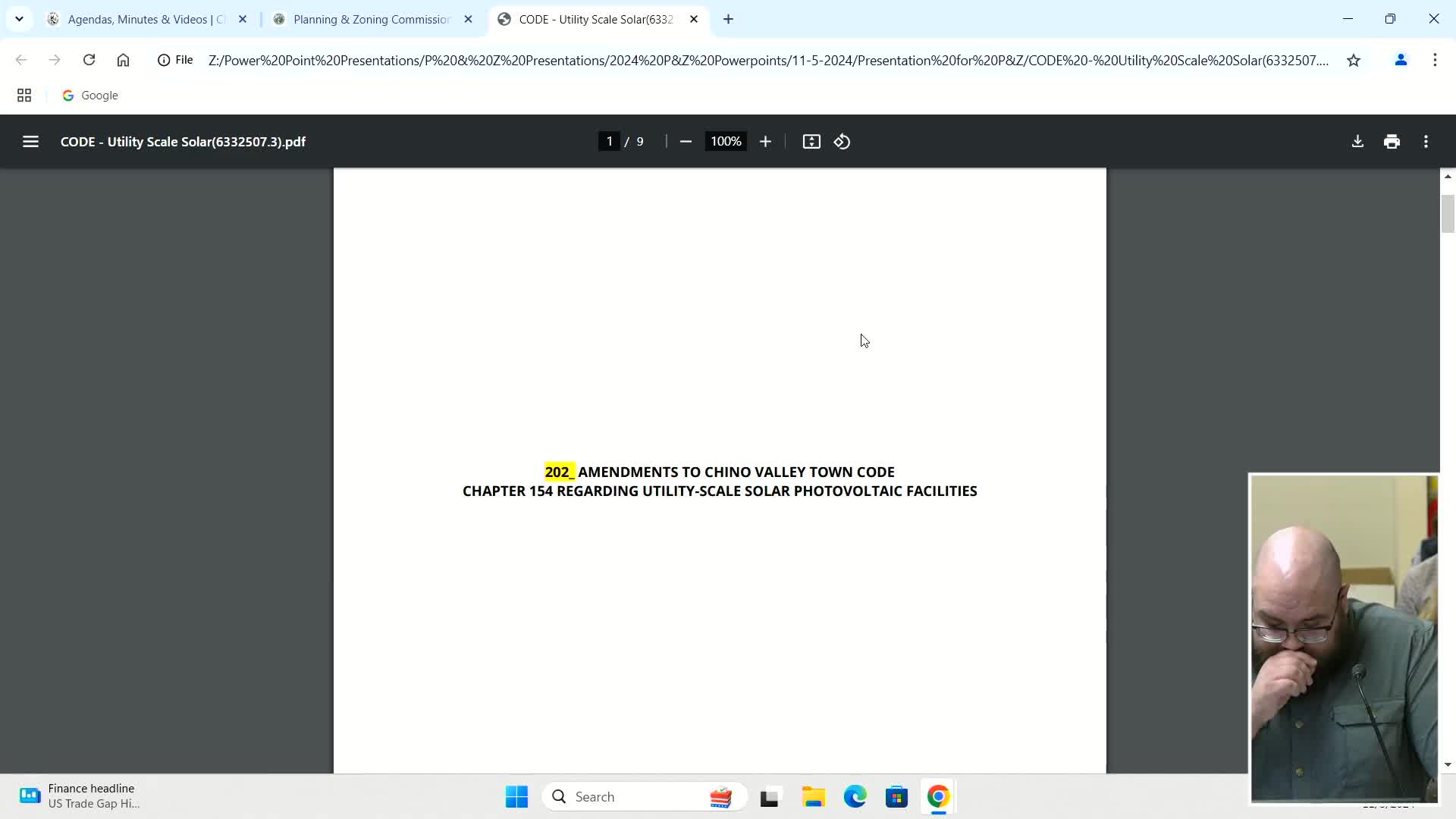Chino Valley debates solar facility zoning after expired permits and new proposals
November 06, 2024 | Chino Valley, Yavapai County, Arizona
This article was created by AI summarizing key points discussed. AI makes mistakes, so for full details and context, please refer to the video of the full meeting. Please report any errors so we can fix them. Report an error »

In the heart of Chino Valley, a pivotal government meeting unfolded, shedding light on the future of solar energy development in the region. As the sun dipped low, casting a warm glow over the town hall, officials gathered to discuss the implications of past and present conditional use permits (CUPs) for solar facilities.
The meeting highlighted the history of solar projects in Chino Valley, beginning with the SunEdison facility, which was later acquired by Arizona Public Service (APS). This 290-acre site, zoned for agricultural residential use, received its CUP in May 2011 and saw construction completed by early 2013. However, the landscape of solar energy development has shifted since then, particularly with the interpretation of zoning codes by current officials.
The current zoning administrator has taken a different stance on how public utility is defined, leading to the expiration of a CUP for a 200-acre facility proposed by RES America Development. This project, located on East Road 4 North, failed to commence construction within the required timeframe, highlighting the challenges faced by developers in navigating the regulatory landscape.
Three new proposals have emerged in recent years, each reflecting the evolving ambitions of solar energy in Chino Valley. The Draconis proposal, initiated in 2020, aimed to establish a large-scale solar facility but ultimately saw its application expire in October 2021 due to incomplete submissions. In 2022, Mission Clean proposed an ambitious 1,800-acre solar project, while another initiative known as Prospect 14 sought to revive an expired CUP from 2013, expanding its footprint to 642 acres.
As discussions continued, the implications of these proposals became clear. The town's approach to zoning and conditional use permits will play a crucial role in shaping the future of renewable energy in Chino Valley. With the community's interest in sustainable development at the forefront, the decisions made in these meetings will resonate for years to come, potentially transforming the landscape of energy production in the region.
The meeting highlighted the history of solar projects in Chino Valley, beginning with the SunEdison facility, which was later acquired by Arizona Public Service (APS). This 290-acre site, zoned for agricultural residential use, received its CUP in May 2011 and saw construction completed by early 2013. However, the landscape of solar energy development has shifted since then, particularly with the interpretation of zoning codes by current officials.
The current zoning administrator has taken a different stance on how public utility is defined, leading to the expiration of a CUP for a 200-acre facility proposed by RES America Development. This project, located on East Road 4 North, failed to commence construction within the required timeframe, highlighting the challenges faced by developers in navigating the regulatory landscape.
Three new proposals have emerged in recent years, each reflecting the evolving ambitions of solar energy in Chino Valley. The Draconis proposal, initiated in 2020, aimed to establish a large-scale solar facility but ultimately saw its application expire in October 2021 due to incomplete submissions. In 2022, Mission Clean proposed an ambitious 1,800-acre solar project, while another initiative known as Prospect 14 sought to revive an expired CUP from 2013, expanding its footprint to 642 acres.
As discussions continued, the implications of these proposals became clear. The town's approach to zoning and conditional use permits will play a crucial role in shaping the future of renewable energy in Chino Valley. With the community's interest in sustainable development at the forefront, the decisions made in these meetings will resonate for years to come, potentially transforming the landscape of energy production in the region.
View full meeting
This article is based on a recent meeting—watch the full video and explore the complete transcript for deeper insights into the discussion.
View full meeting
